

Detroit Lions
Sam Williams
(Game Worn)
Located
approximately twenty miles outside of Lansing, Michigan, the small village
of Dansville has become what many term a “bedroom community,” with residents
finding a comfortable, “small town” manner of daily living that nicely
augments their commute to work at either the State Capital or at Michigan
State University to their northwest. Through the 1970’s the residents of
Dansville were still considered to be “farmers” by their big city neighbors
with the 450 to 500 townspeople identified with the fields that surrounded
the village. In 1984, the community suffered a black eye that spanned the
nation’s consciousness as the movie “The Burning Bed” made its debut. Based
upon the sensational 1977 murder of Dansville resident James “Mickey” Hughes
who was doused with gasoline and set on fire while sleeping, the movie
presented the plight of his oft-battered wife Francine who retaliated in
this most horrific manner. Her acquittal, based upon the domestic abuse she
had suffered, became the basis for a nation wide movement that resulted in
the change of local and state wide laws and the sensational movie starring
Farrah Fawcett became the rallying cry for a new social awareness. With the
slower pace of most small towns, Dansville, other than this negative event,
had little out of the ordinary in its history, and long forgotten were the
athletic accomplishments of native son Sam Williams who starred on the
football gridiron during the late 1940’s. Choosing the military over
college, Sam took his multi-sport talent and a 6’5” frame to the United
States Navy.
|
|
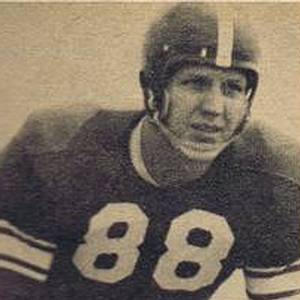 |
Starring
on the Naval football squad, Williams was named to the All Military Service
Team two times during his four years of active duty. He decided to give
college a second consideration, entered Michigan State, and immediately
demonstrated his abilities. During his sophomore season, based upon his
effectiveness as a service ball player, the Los Angeles Rams thought enough
of him to name Sam as their twenty-fourth round choice in the 1956 player
draft, despite the fact he would not be available until 1959. Playing as a
two-way end, Sam was more effective on defense and was named to the All Big
Ten team in both 1957 and ’58. He also garnered All American honors and led
the Spartans as their captain during his senior season. In the East West
Charity Classic For The Crippled Children’s Hospital, best known as the East
West Shrine Game, future Detroit Lions teammate and Notre Dame All American
Nick Pietrosante was named the game MVP with Williams the Most Valuable
Lineman. His two sacks of quarterback Lee Grosscup helped to hold the highly
touted West squad offense to a mere seventeen rushing yards.
|
|
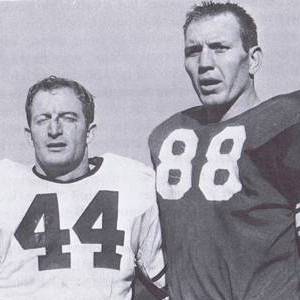 |
As a twenty-seven year old rookie with the Rams, Williams spent time at
offensive and defensive end positions and was then shuffled to the Lions for
the 1960 season. The Lions also drafted defensive tackle Roger Brown out of
Maryland State, giving them two 6’5” defensive linemen in Brown and
Williams. Teamed with greats Alex Karras and Joe Schmidt, the Lions were
ready to take on the offenses of the NFL and would do so while earning the
respect of their NFL peers and fans for a number of years. Somewhat
overshadowed by the rapid and dramatic rise of the Green Bay Packers under
Head Coach Vince Lombardi, it wasn’t until the Thanksgiving Day contest of
1962 that a national audience witnessed a Lions defense that was truly one
of the best of the era.
|
|
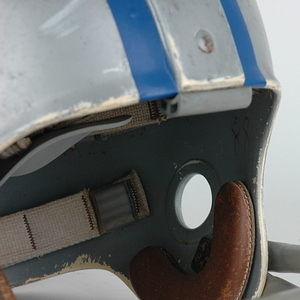 |
Sam Williams, number 88, finally gained national attention in the 1962 Thanksgiving Day game against the Packers
Much was written about this game and perhaps one description
summed it up well: “Outlined against a blue-gray November sky,
the Lions leaped and crushed Green Bay. They ate them alive! On
this Thanksgiving Day before 57,598 hungry Detroit fans, the
Lions 1000 lb. line chased the enemy quarterback. Bart Starr was
their turkey.” Finally, that under appreciated defensive line of
ends Sam Williams and Darris McCord, and tackles Brown and
Karras got their belated respect.
|
|
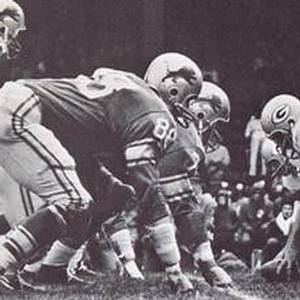 |
They sacked Starr eight times in the first half alone resulting in a loss of seventy-six yards. On one of those, Starr fumbled after being pummeled by Brown and big Sam Williams, with his distinctive two bar mask, recovered the ball for a touchdown. Three more sacks followed in the second half. One reporter stated that “…the devastating way Starr was engulfed by the Lions was so overwhelming it was unbelievable.” An integral part of that overwhelming line was the usually overlooked Williams.
|
|
Williams and Roger Brown go high to thwart John Unitas of the Colts
A solid and reliable player and one who no doubt could have starred on offense or defense, he reminded fans of his pass catching abilities when hauling in a nineteen yard TD pass on a fake field goal attempt in the Playoff Bowl game that followed the 1961 season. Though the attention brought to the Lions defensive line and in a very small amount to Williams during the 1961 and ’62 seasons was well earned and appreciated, he played highly respected and solid football during his entire tenure in Detroit. As the team faltered however, changes were made and after the 1965 season Williams was lost to the expansion Atlanta Falcons, where he stayed for two years, finally retiring after the ’67 season.
|
|
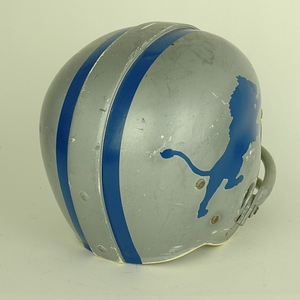 |
One can view those great Lions teams of the early 1960’s knowing that it was their defense that always kept them in contention and many have forgotten that it wasn’t just Schmidt, Karras, and Yale Larry who earned them their fierce reputation but it was the lesser known Williams, McCord, and Wayne Walker as well. Williams' silver helmet with the leaping Lion logo and two bar mask, a mask that stood out once most linemen embraced any of the cage-like offerings, is a perfect reflection of his era, one that specifically celebrated the ruggedness of the defense Sam Williams represented.
|
|